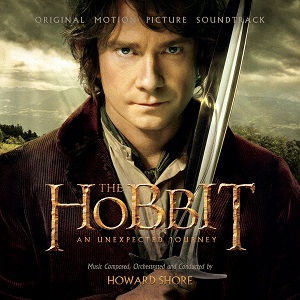
I remember clearly when the first installment of the Lord of the Rings was released, as it was a really big event in cinema back then. A rock solid story, penned nearly half a century earlier, the cinematic possibilities of the new millennium, and a very talented group of people, made the Lord of the Rings trilogy into a huge critical and box office success. After its conclusion, and a shower of Oscars, rumors of plans to bring the short book that preceded The Lord of the Rings: The Hobbit, to the big screen started to spread. Unfortunately, the project would be long delayed over financial and legal disputes. Guillermo del Toro, of Hellboy and Pan’s Labyrinth fame, was attached to direct at some point, but eventually Peter Jackson, who originally directed the Lord of the Rings trilogy, took it upon him to direct this prequel as well, split not into two, but three separate films. The first installment of this new trilogy was recently released: An Unexpected Journey.
Fans of Tolkien’s universe will undoubtedly be surprised by yet another trilogy, since the Hobbit is such a thin book compared to its successor: The Lord of the Rings, that consisted of three large volumes. Not only that, but The Hobbit is also a very different book, and, by some standards, less intimidating to read than The Lord of the Rings. Nevertheless, it is a delight to hear the familiar start of the book, at the start of this first film, voiced by Ian Holm, who reprises his role as the old Bilbo Baggins: “In a hole in the ground, there lived a hobbit …”
An Unexpected Journey lasts over three hours, and takes its fair share of time to get into higher gear. The beginning is slowly paced, effectively re-familiarizes the viewer with Bilbo’s life in the shire, and sets-up the initial conflict of the book: whether or not to go on an unexpected journey. Martin Freeman portrays a very convincing, somewhat naive, young Bilbo: the main protagonist. Furthermore, it is a great joy to see Ian McKellen as Gandalf once more. Fans of the original trilogy will not be disappointed, as this is not the only familiar face to appear.
Time is liberally used, which works very well for some parts, but for others the scenes can feel a little drawn out: as if the same thing could have been told in half the time. Fortunately, the somewhat uneven pacing is not too much of a problem, as there is enough happening to keep viewers entertained. Portions of the film also set-up events that later play a much more prominent role in Lord of the Rings. Readers familiar with the books, and original film trilogy, know that Frodo was certainly not the first hobbit to carry the ring of power. Sauron’s rise is foreshadowed in this movie, and I have no doubt this will recur throughout the two movies that are yet to come.
Peter Jackons’s trademark camera work is enthralling. Many wide shots of beautiful landscapes and vast open spaces with lots of attention to detail. The film is an absolute visual treat. Unfortunately, besides Bilbo and one of the dwarfs, the character development is a little thin. The two main conflicts are that of Bilbo’s journey, and of the leading dwarf’s revenge. These are both well explained and narrated, which helps to give the film focus. However, within the long running time more would have been possible in terms of explaining the motivations (and appearance) of other characters, instead of drawing out certain less essential scenes, like one involving a group of trolls.
The Hobbit is the first movie to be projected in High Frame Rate (HFR) 3D. When director Peter Jackson first showed this to a limited audience, the reactions where mixed. Some complained that the cinematic feel was lost. I have to admit that the higher frame rate at first gave me the impression that some footage was being played back at twice the speed, this was particularly noticeable in scenes involving quick, close-up, movements. However, this was likely simply an adjustment phase, as after about half an hour or so, I no longer registered it. The main advantage of HFR 3D is that it virtually eliminates the strobing seen in regular 3D movies. Therefore, I would not be surprised if HFR will quickly be adopted as the new standard frame rate for 3D movies. It also opens up some new cinematic possibilities. For example, the possible speed of panning for film shot at 24 frames per second is somewhat limited, as you either end up with choppy or blurry footage. With a higher frame rate faster pans are possible. Unfortunately, HFR does not solve what is 3D projection’s biggest drawback: the convergence/focus issue.
The Hobbit: An Unexpected Journey feels familiar, and is both entertaining and eye-pleasing. However, although it can stand on its own, it misses some of the ‘magic’ and ‘grandness’ of the original Lord of the Rings trilogy. However, this also captures the essential difference between that book and the friendlier and tamer ‘The Hobbit’. However, Jackson’s liberal handling of the source material may not please all die hard Tolkien fans. I wonder where they will take this in the next two installments.
★★★★★★★★☆☆
Official Site | IMDB | Wikipedia

